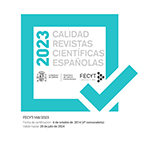Barajar y dar de nuevo. Hacia una teoría secuencial de la recentralización
Resumen
Los procesos de recentralización tienen lugar cuando se reconfigura el esquema de descentralización para favorecer la concentración de poder en el nivel central. Pero, ¿cómo ocurre este proceso? Este trabajo estudia la aparición de políticas recentralizadoras que incrementan la influencia del Ejecutivo nacional y disminuyen la capacidad política, administrativa y fiscal de los entes subnacionales. Para ello clasifica las medidas recentralizadoras en baja, media y alta intensidad. Demuestra dos tipos de trayectorias secuenciales de la recentralización y dos escenarios posteriores. La teoría propuesta dialoga con una revisión de los procesos evidenciados en Colombia y Venezuela entre los años 2000-2020, dos casos diferentes analizados en perspectiva comparada.
Descargas
Descarga artículo
Licencia
La revista Política y Sociedad, para fomentar el intercambio global del conocimiento, facilita el acceso sin restricciones a sus contenidos desde el momento de su publicación en la presente edición electrónica, y por eso es una revista de acceso abierto. Los originales publicados en esta revista son propiedad de la Universidad Complutense de Madrid y es obligatorio citar su procedencia en cualquier reproducción total o parcial. Todos los contenidos se distribuyen bajo una licencia de uso y distribución Creative Commons Reconocimiento 4.0 (CC BY 4.0). Esta circunstancia ha de hacerse constar expresamente de esta forma cuando sea necesario. Puede consultar la versión informativa y el texto legal de la licencia.











